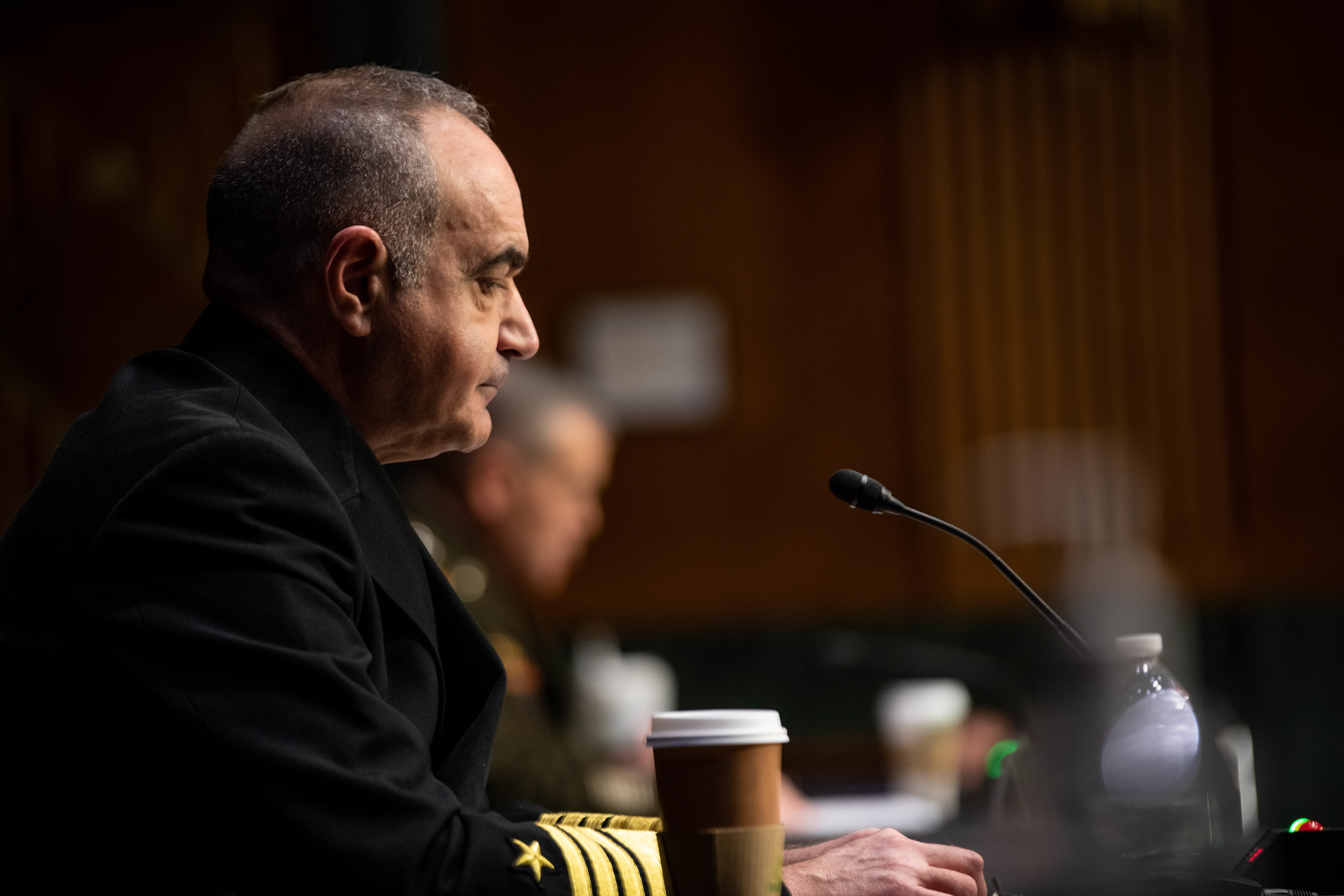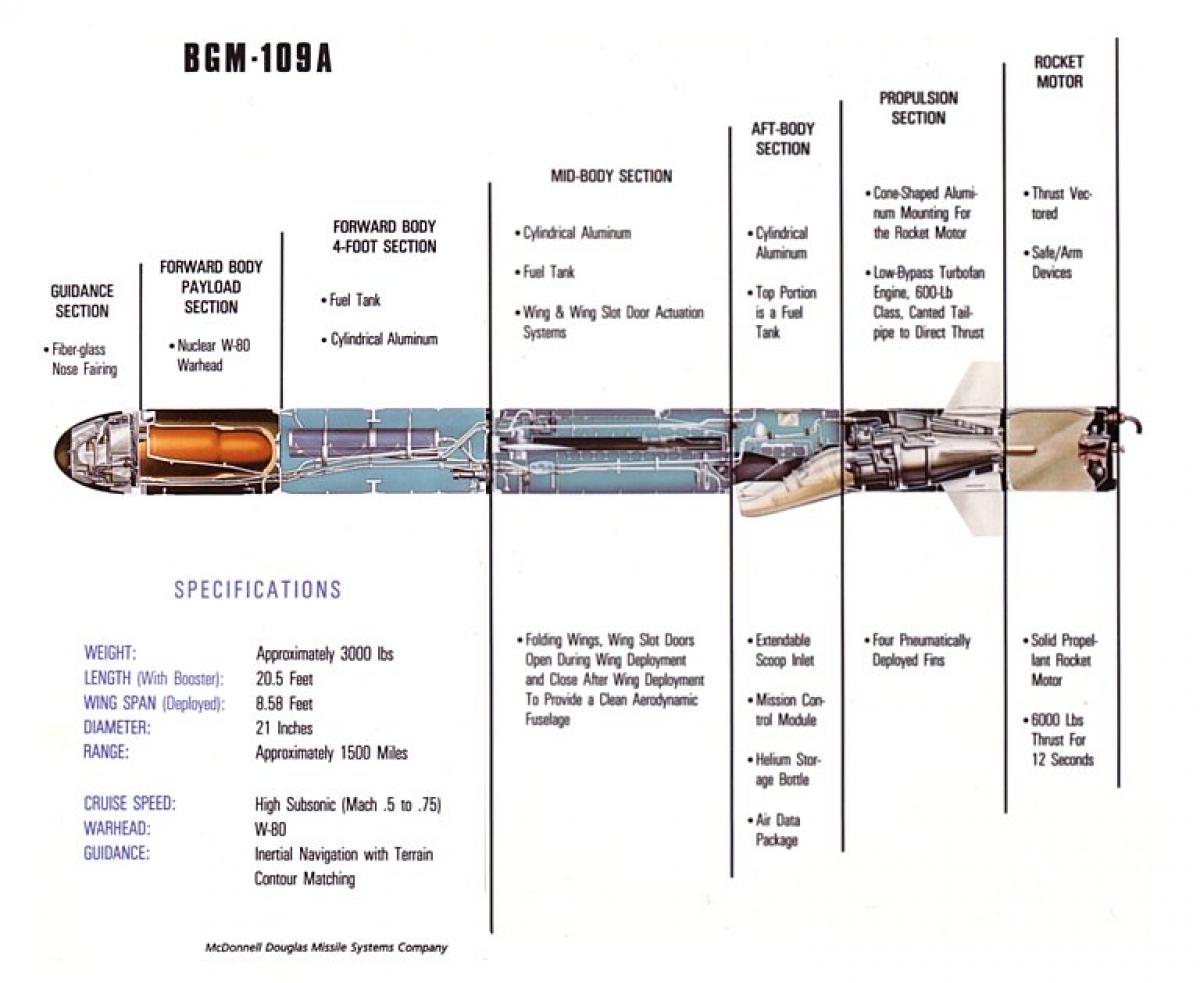
The vice chairman of the Joint Chiefs and Strategic Command’s top officer told a Senate panel Wednesday they favored continued development of the Navy’s low-yield Sea-Launched Cruise Missile-Nuclear capability, despite last year’s guidance the program be abandoned and being zeroed out in next year’s budget.
Testifying before the Senate Armed Services Strategic Forces Subcommittee, STRATCOM’s Adm. Charles Richard said, “without [SLCM-N], adversaries may perceive an advantage.”
Adm. James Grady also testified that he was in favor of the missile development continuing.
His answer echoed that of the chairman, Army Gen. Mark Milley, who told the House Armed Services Committee last month that research into SLCM-N would give the president more options in a crisis.
The missile with a range of about 1,500 miles could fill a “deterrence and assurance gap” against China and Russia and with allies and partners, Richard testified.
“To address this gap, a low-yield, non-ballistic capability to deter and respond without visible generation is necessary to provide a persistent, survivable, regional capability to deter adversaries, assure allies, provide flexible options, as well as complement existing capabilities. I believe a capability with these attributes should be re-examined in the near future,” Richard wrote in an April 5 letter to Congress, first reported by Defense News.
He repeated that observation Wednesday.
“We don’t know where China is going in capacity and capability,” Richard told the panel.
He reminded the senators of Russia’s threat to use low-yield tactical nuclear weapons to get its way in Ukraine after the poor performance of its conventional ground forces and the possibility of China using nuclear coercion to bring Taiwan under its control.
In last year’s budget request, the Navy sought about $15 million for the missile’s research and development, as well as its warhead.

“The Navy indicated that the program was ‘cost prohibitive and the acquisition schedule would have delivered capability late to need.’ According to the Navy, this cancellation would save $199.2 million in FY2023 and $2.1 billion over the next five years,” according to the Congressional Research Service’s most recent report on the program.
Although the missile and warhead were called for in the 2018 Nuclear Posture Review, a Pentagon official said last month the program’s cancellation was called for in the Biden administration’s review, which was released earlier this year.
At Wednesday’s hearing, William LaPlante, under secretary of defense for acquisition and sustainment, said the Pentagon will be sending its latest report on the sea-launched cruise missile-nuclear program to Congress soon.
When asked, LaPlante said he expects “larger numbers to come” in future budget requests for the nuclear enterprise. The request for Fiscal Year 2023 is $34.4 billion, $7 billion above last year’s. He added this amounts to about 4.5 percent of the overall Pentagon request. In addition to modernizing all three legs of the triad, the budget is providing for the development of five new warheads plus the rebuilding facilities at Los Alamos and other laboratories that date to World War II.
“Moving at the speed of relevance is a must,” Grady said about all three efforts.
Citing his two predecessors’ warnings to Congress, Richard said, “I very little ability to mitigate risk” if the modernization program stalls. “What we have is the absolute minimum” now.
Citing China’s “breakout” as a nuclear power, Richard said it “rivals the biggest expansion of any nation” including the United States and Soviet Union in the 1960s.
Beijing doubled its stockpile in two years — much faster than intelligence agencies expected, Richard said. He added China went from zero to 360 intercontinental ballistic missile silos in a few years, doubled the number of its mobile missile launchers, plussed up its ballistic missile submarine fleet and can count its air-launched nuclear missiles as an effective part of its own nuclear triad.
As Beijing was developing its strategic intercontinental nuclear force, Richard said it continued expanding its intermediate-range nuclear capabilities. Although the United States withdrew from the intermediate-range nuclear treaty [IMF] with Russia during the Trump administration, China was never a party to the agreement.





